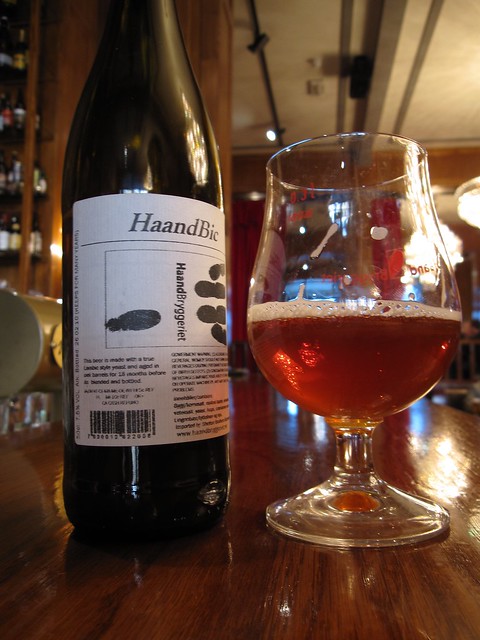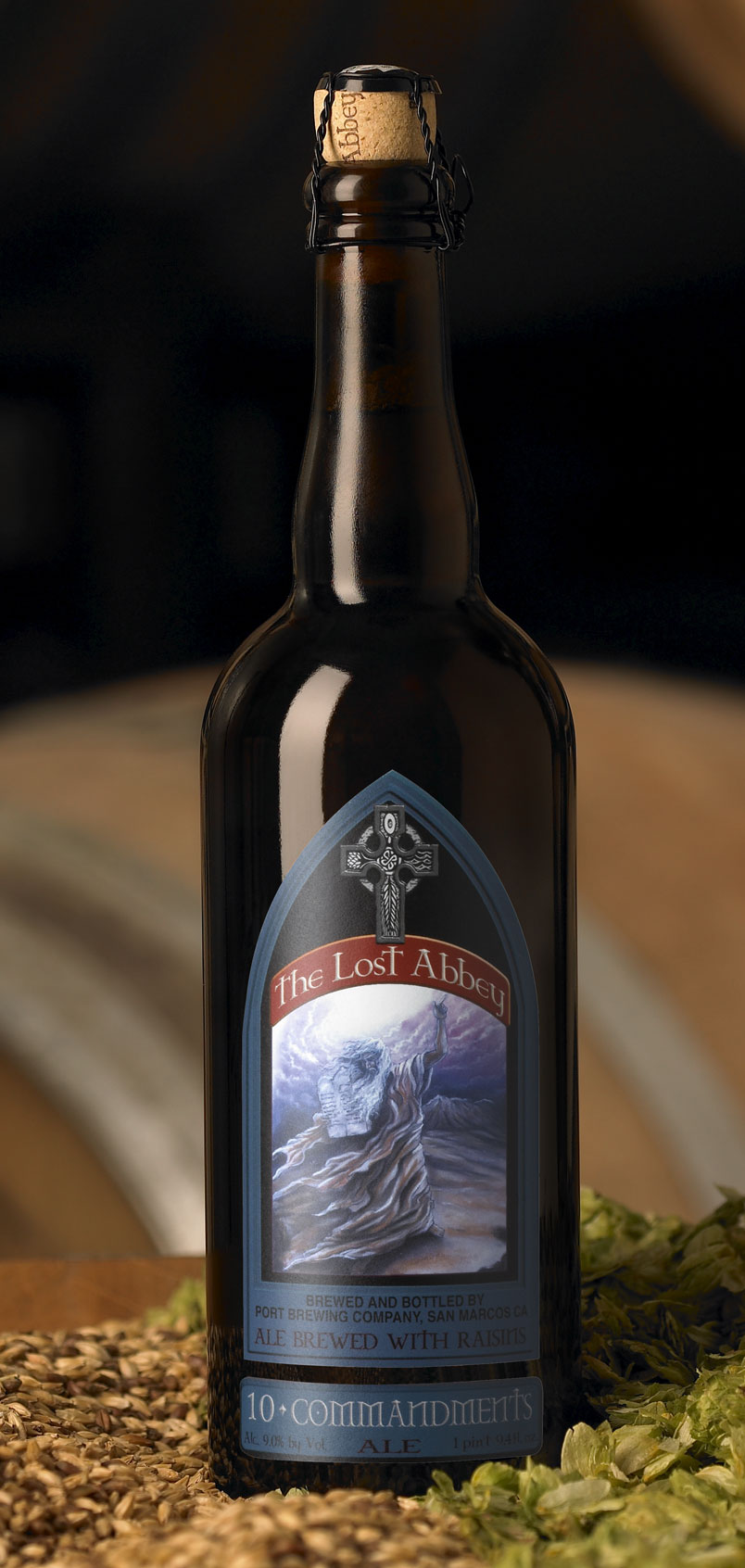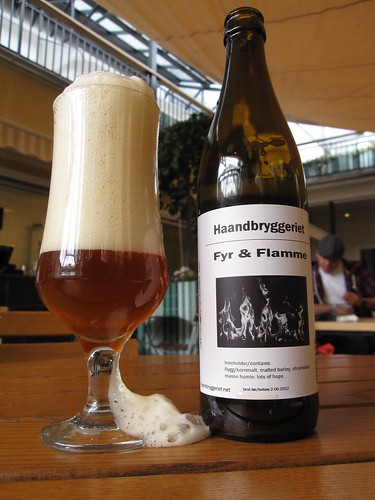Haandbic’s unique flavors clearly come from being aged in oak barrels for nearly 18 months and being brewed with red currents and lingonberry (otherwise known as cowberry). These berries impart a rather tart taste, which blends well with the sourness that comes from wild yeasts. Overall, Haandbryggeriet’s Haandbic is a relatively flavorful and aromatic wild ale, although cellaring it for a few more years would probably give it a better balance and greater complexity.

Hailing from Drammen, Norway – about a half-hour drive to the south of Oslo, Haandbryggeriet is run by four guys that, according to their website, are “enthusiastic about beer”. Indeed, they have to be: Their brewery is essentially run in their spare time and on a volunteer basis. This enthusiasm shows in the rather long list of 24 different brews they make. While some of their products have not been big hits with me personally, Haandbryggeriet demonstrates a tremendous interest in experimentation, as exemplified by Haandbic’s daring side.
Haandbic starts off with a rather timid head in that it had virtually none – a characteristic that is not necessarily a bad thing for unblended lambics or wild ales. Hence, it should be no surprise when finding the side of the glass almost completely devoid of lacing. With a translucent reddish-orange color in the context of a dimly lit room, Haandbic’s body to me did not look fundamentally different than red wine.
The aroma is potent and relatively complex, characterized by the predominance of oak accompanied by the smells of berries, vinegar, and a touch of vanilla perhaps. When compared to all the other qualities had by Haandbic, the aroma is definitely the most enjoyable, although the berry note was not as prominent as what I would have expected from a fruit lambic. While we differ a bit on the various smells, Beer Chef Blog’s description is very thorough: “The aroma reminds me of a hospital…autoclaved this and that mixed with some antiseptic and rubbery notes all swirled into [the] smells of peaches, wet wood, damp forest and black peppercorn spiciness”. Well said!
The aroma accurately predicts the taste. It starts off with a strong, but brief semi-sweet berry flavor that quickly descends into the more familiar wild ale flavors. However, the strong oak and smoky flavors seem to moderate the sourness a bit. Vinegar notes are present, along with the tell-tale funk from the Brettanomyces yeast. Again, flavors from the berries – which should have been a feature flavor – were a bit weak on my palate at least. The finish is relatively tart and dry, and the mouthfeel is medium with little to no carbonation – again, it feels a bit like wine really.
All in all, I expected more berries on the nose and the palate. That said, the oak note is obvious and interesting when juxtaposed on the tart and moderately funky background. The appearance is nothing exciting, although consistent with what might be expected from some unblended lambics or wild ales. I certainly recommend trying Haandbryggeriet’s Haandbic if for no other reason than to experience its originality and daring side.
Links
Haandbryggeriet Haandbic on Beer Chef Blog
Haandbic at Haandbryggeriet
Haandbryggeriet Haandbic on BeerAdvocate
Haandbryggeriet Haandbic on Ratebeer.com
Image credits
Bernt Rostad













